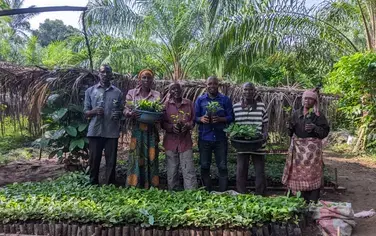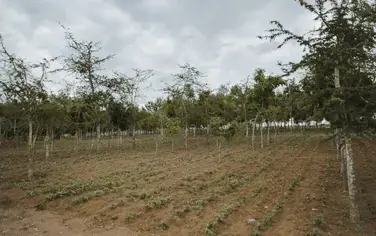The Department of Forestry and Project for Conservation and Sustainable Management of the Dzalanyama Forest Reserve (CSOMA-DRF) is reaching out to peripheral communities with fire management strategies with a view to conserving species of trees in line with AFR100, an African partnership that aims to restore 100 million hectares of degraded land by 2030.
Wildfires are a menace to trees during the months of August through November in Malawi. It's no wonder that stakeholder engagement is a key principle of AFR100. “AFR100 seeks fair and equitable access to land and forest resources for all relevant stakeholders and promotes the rights of local and indigenous communities, youth and women,” says the document.
Speaking during a fire prevention sensitization meeting held on 23rd September at Mkokoto village with Traditional Authority Masumbankhunda in Lilongwe, COSMA-DFR project focal point person Moses Njiwawo said the main challenge is the prevalence of wild fires that are lit by people walking within the precincts of the reserve wantonly.
“Most of the trees planted do not survive to maturity stage because of fires that are lit carelessly. This result in less than 50 percent survival rate. This mostly happens because they are wiped out, while still in their early stages of growth and development,” explained Njiwawo in an interview. “We want them to appreciate the benefits they get from the reserve because once they appreciate this, whey will see the need to manage it. Additionally, they will be able to know that once the forest is destroyed their livelihoods will be affected."
COSMA-DFR Technical Coordinator for public relations and environmental education Charles Gondwe said they are working on finding out the extent to which the forest has been affected by fire.
“The geo-physical maps show that there have been a lot of forest fires in the reserve and most of the areas [that] are burnt have lost cover,” Gondwe said. He cautioned that this malpractice has affected greatly the progress of other projects such as bee keeping production practiced by local communities around the reserve.
Gondwe advised that community involvement is important because if residents take care of the forest it means they will also benefit a lot and improve their livelihoods. According to Gondwe, COSMA-DFR supported by Japan Cooperation International Agency and the Forestry Department have intensified fire awareness messages because currently we are in the fire seasons (July - November).
As such the project takes awareness campaigns to the peripheral of the reserve to rekindle the knowledge that people have on fire management. Taking his turn, Traditional Authority Masumbankhunda said the project is important to their community as the forest provide livelihoods opportunities for the local populace. Masumbankhunda added they now have bylaws in place. For example, when someone is caught setting fire in the forest, the person's group village headman is responsible to pay for the damages.
“This is so because we assume that the village head did not inform his subjects not to set fire in the forest,” Masumbankhunda explained during the awareness campaign.
The local leader said the coming of COSMA-DFR has helped to make communities understand that fire is the most dangerous thing to the survival of the forest reserve. AFR100 is developing a set of common good practices and principles for forest landscape restoration (FLR), tested tools and guidelines for governance assessments, stakeholder participation, tree and land tenure including monitoring and other critical aspects. However, the responsibility of safeguarding ecological integrity and social interests remains with the national authorities and implementing partners.




